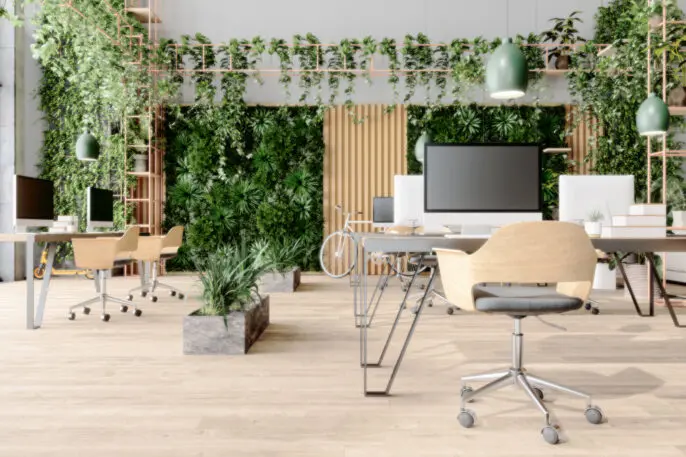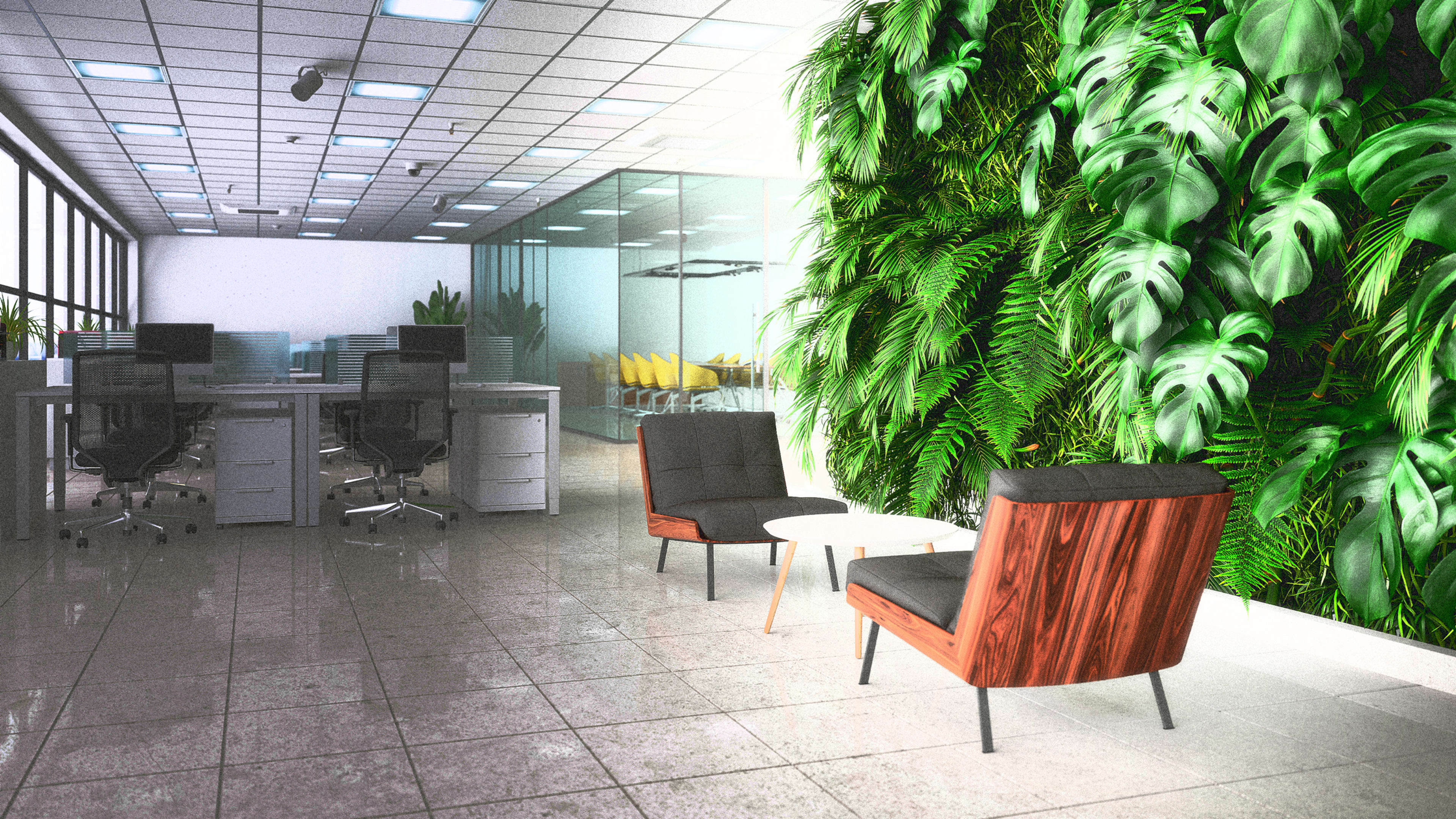Offices are not exactly known for their health benefits. While companies are scrambling through the pandemic to increase their buildings’ wellness offerings—from meditation rooms to outdoor meeting areas—the average office is still a noisy, distracting hell hole that many employees would rather avoid.
But going to the office doesn’t have to suck your life force. New research out of Finland finds that one simple tweak to the interior design of offices could help quickly improve the health—and the skin—of office workers.
The addition of a plant-filled green wall in an office environment for just a few weeks has been shown to increase the amount of Lactobacillus bacteria on workers’ skin, a genus of microbes that has been shown to help the skin fend off pathogens and inflammation and improve its overall health. After only two weeks working alongside this living wall of plants, workers had measurably healthier skin and immune system responses.

People working in two different university offices in Finland had their spaces outfitted with one or two small mobile green walls measuring 6.5 feet by 3.2 feet. Built by the company Naava, the portable green walls feature three types of plants: heartleaf philodendron, dragon tree, and bird’s nest fern. The plants and their roots absorb air in the office, and the walls use automated fans to circulate this air back into the space.
The study’s results are based on 28 human subjects, 11 of whom were exposed to the green wall for 2 weeks, and 17 of whom were in a control group. Skin and blood samples were collected from each subject before the experiment, again after 14 days when the walls were removed from the offices, and then again after 28 days. Those working near the green wall experienced an average doubling of the abundance of Lactobacillus on their skin compared with workers in the control group.
Though the sample size is small, the study is one more indication of the power of biophilic design in the office, or integrating more natural elements into the often nature-free banality of the conventional office. Designers have begun incorporating better natural light, more access to fresh air and operable windows, and a broader array of plant life that goes beyond mere decoration. Previous research has shown positive health outcomes from being exposed to natural light or even simply being able to see plants or trees out a window. Hospitals and healthcare facilities are also embracing biophilia, for both their patients and their staff.
For offices, the stakes are arguably lower than in a hospital, and yet the amount of time people spend in offices is much greater than the rare hospital stay. Integrating these kinds of design elements may be one way of making conventional offices healthier places to spend the workday. They could even be the next office perk companies can use to attract employees. Forget foosball tables and free snacks—the office of the future could give your skin a healthy glow.
Recognize your brand’s excellence by applying to this year’s Brands That Matter Awards before the early-rate deadline, May 3.
